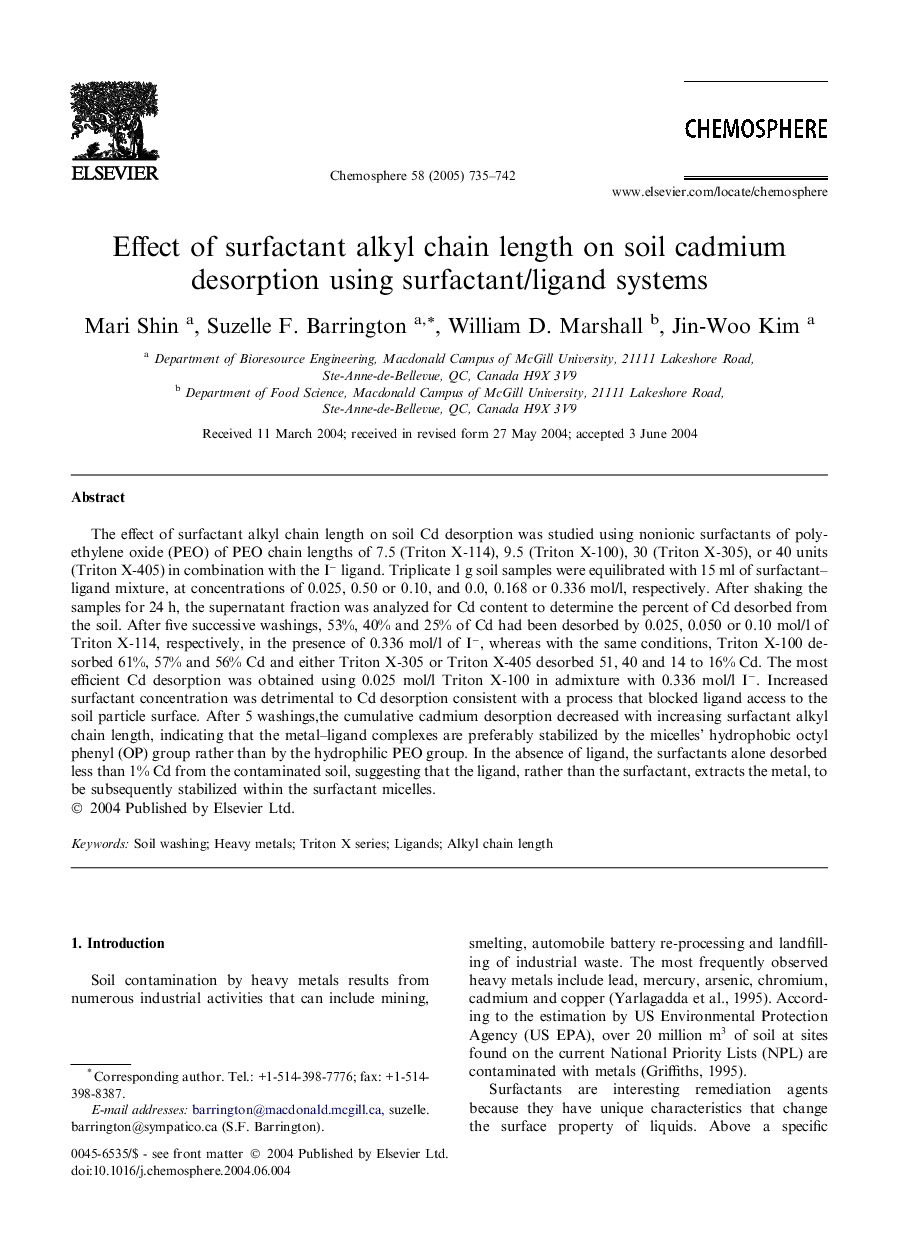| Article ID | Journal | Published Year | Pages | File Type |
|---|---|---|---|---|
| 9451750 | Chemosphere | 2005 | 8 Pages |
Abstract
The effect of surfactant alkyl chain length on soil Cd desorption was studied using nonionic surfactants of polyethylene oxide (PEO) of PEO chain lengths of 7.5 (Triton X-114), 9.5 (Triton X-100), 30 (Triton X-305), or 40 units (Triton X-405) in combination with the Iâ ligand. Triplicate 1 g soil samples were equilibrated with 15 ml of surfactant-ligand mixture, at concentrations of 0.025, 0.50 or 0.10, and 0.0, 0.168 or 0.336 mol/l, respectively. After shaking the samples for 24 h, the supernatant fraction was analyzed for Cd content to determine the percent of Cd desorbed from the soil. After five successive washings, 53%, 40% and 25% of Cd had been desorbed by 0.025, 0.050 or 0.10 mol/l of Triton X-114, respectively, in the presence of 0.336 mol/l of Iâ, whereas with the same conditions, Triton X-100 desorbed 61%, 57% and 56% Cd and either Triton X-305 or Triton X-405 desorbed 51, 40 and 14 to 16% Cd. The most efficient Cd desorption was obtained using 0.025 mol/l Triton X-100 in admixture with 0.336 mol/l Iâ. Increased surfactant concentration was detrimental to Cd desorption consistent with a process that blocked ligand access to the soil particle surface. After 5 washings,the cumulative cadmium desorption decreased with increasing surfactant alkyl chain length, indicating that the metal-ligand complexes are preferably stabilized by the micelles' hydrophobic octyl phenyl (OP) group rather than by the hydrophilic PEO group. In the absence of ligand, the surfactants alone desorbed less than 1% Cd from the contaminated soil, suggesting that the ligand, rather than the surfactant, extracts the metal, to be subsequently stabilized within the surfactant micelles.
Related Topics
Life Sciences
Environmental Science
Environmental Chemistry
Authors
Mari Shin, Suzelle F. Barrington, William D. Marshall, Jin-Woo Kim,
